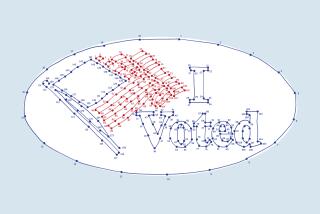Primaries Too Early by Far
- Share via
For the second time in four years, California has moved up its presidential primary election in an attempt to flex the state’s giant political muscles earlier in the year. And for the second time, the politicians have learned that the road to California still runs through New Hampshire and Iowa.
Four years ago, a host of states rushed ahead of California. By the March 26, 1996, primary, Bob Dole already had wrapped up the GOP nomination and Bill Clinton was unopposed for the Democratic slot without Californians playing a role.
Next year, the California primary will be held March 7, earlier than ever and right after New Hampshire’s first-in-the-nation primary and Iowa’s caucuses. The idea was to force candidates to focus more on the Golden State because of its wealth of delegate votes. They would have to abandon their past practice of making an occasional visit to skim off contributions that will be spent in some little state east of the Mississippi.
But at least nine other states, including New York, Florida, Ohio and Pennsylvania, also will vote March 7. And more than 20 states will hold primaries before the end of March.
It’s now possible that the party nominations will be all but settled by the time the votes are counted in California and almost certainly by the end of March, some five months before the nominating conventions.
California will have some influence, but will not have the starring role that state Democratic and Republican party officials had hoped. It’s just too expensive to campaign in the California. Candidates want to maximize their resources in smaller states where the dollar goes further.
Second-tier candidates must count on their personal campaign skills to score a breakthrough in New Hampshire or Iowa to develop the momentum needed to compete in the thicket of primaries to come. There is value in having early primaries where personal politics still means something, but it’s time that the parties end the compression of primary elections to a brief window early in the year.
The solution is some version of a regional primary system touted by California Secretary of State Bill Jones and fellow state elections chiefs. There would be four primaries scattered throughout the spring. The order of the elections would be rotated so each region went first every fourth election. Either Iowa or New Hampshire would be in the first wave every second election. Surely states would emerge in the other regions that would provide tests for second-tier candidates--Arizona or Oregon in the West, for example.
The only way for this to succeed is for the two major parties to force Iowa and New Hampshire to participate in a regional system. Their us-first status is a novelty the system can no longer afford. The extreme compression of the primary season so early in the year is a negative trend that must be reversed.
More to Read
Get the L.A. Times Politics newsletter
Deeply reported insights into legislation, politics and policy from Sacramento, Washington and beyond. In your inbox twice per week.
You may occasionally receive promotional content from the Los Angeles Times.










